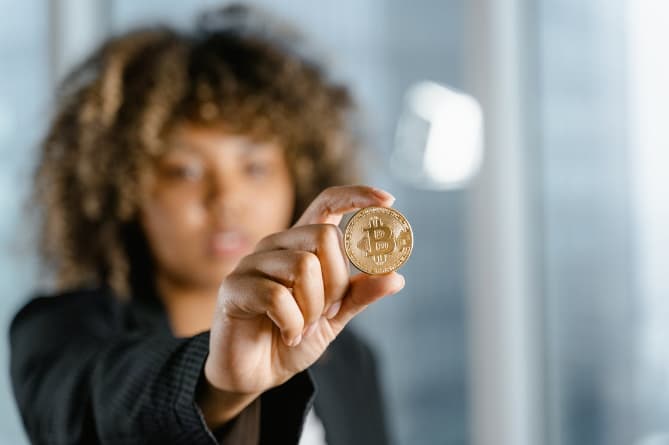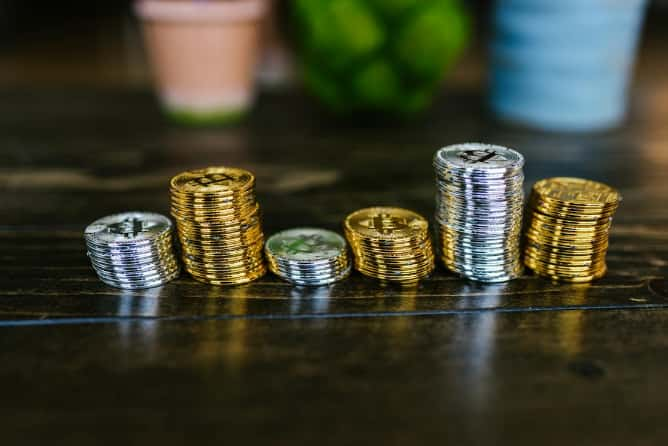The art world is no stranger to innovation and disruption, and the latest trend taking the industry by storm is the rise of Non-Fungible Tokens, or NFTs. These digital assets, powered by blockchain technology, have transformed the way we value and exchange art. Understanding the basics of NFTs is essential to navigating this new frontier in the art market.
Understanding the Basics of NFTs
Welcome to the fascinating world of NFTs! In this article, we will delve into the intricacies of Non-Fungible Tokens and explore how they have revolutionized the concept of digital ownership. So, let’s embark on this journey together and unravel the mysteries of NFTs!
What are NFTs?
NFTs, or Non-Fungible Tokens, have taken the digital world by storm. These unique digital assets have the power to represent ownership or proof of authenticity for a wide range of digital and physical items. Unlike cryptocurrencies such as Bitcoin or Ethereum, which are fungible and can be exchanged on a one-to-one basis, NFTs are distinct and cannot be replaced with something else.
Think of NFTs as the digital equivalent of a certificate of authenticity or a deed for a piece of land. They provide a way to prove ownership and verify the uniqueness and scarcity of a digital asset. This has opened up a whole new realm of possibilities for artists, collectors, and enthusiasts alike.
How Do NFTs Work?
At the heart of NFTs lies blockchain technology, a decentralized digital ledger that records transactions across multiple computers. This technology ensures that each NFT is unique and cannot be replicated or tampered with. It brings transparency and security to the world of digital ownership.
Artists and creators play a pivotal role in the creation of NFTs. They mint these tokens by uploading their digital assets onto a blockchain platform. This process creates a verifiable and transparent record of ownership, making it possible to trace the origin and authenticity of an NFT.
Once an NFT is created, it can be bought, sold, and traded on various online marketplaces. These marketplaces serve as hubs for collectors and enthusiasts to explore and acquire unique digital assets. The transactions that take place on these platforms are recorded on the blockchain, ensuring a reliable and immutable history of ownership.
One of the most intriguing aspects of NFTs is the ability for creators to earn royalties whenever an NFT is resold. This provides artists with a new revenue stream, as they can continue to profit from their work even after it has been sold. This innovative feature has transformed the way artists monetize their creations and has empowered them to have a more sustainable career in the digital age.
As NFTs continue to gain popularity, they have sparked a vibrant ecosystem of creativity and innovation. Artists are exploring new mediums and pushing the boundaries of digital art, while collectors are curating unique collections that reflect their individual tastes and interests. The world of NFTs is constantly evolving, and it is an exciting time to be a part of this digital revolution.
So, whether you are an artist looking to showcase your work, a collector seeking to acquire rare digital assets, or simply a curious observer interested in the latest trends, NFTs offer a captivating and immersive experience that is sure to leave a lasting impression.
The Intersection of Art and Blockchain
The intersection of art and blockchain is a fascinating realm where technology meets creativity, revolutionizing the art industry in unprecedented ways. Blockchain technology, with its decentralized and transparent nature, has the potential to address longstanding issues such as provenance, authenticity, and ownership.
Imagine a world where every brushstroke, every stroke of the pen, and every digital creation is recorded on a blockchain, creating an immutable and transparent record of an artwork’s entire lifecycle. This would ensure that the history of an artwork is preserved and can be easily traced back to its origins, eliminating any doubts about its authenticity.
Furthermore, blockchain provides artists with a newfound sense of control over their work. In the traditional art world, artists often have to rely on intermediaries such as galleries or auction houses to sell their art and gain recognition. However, with blockchain, artists can now directly connect with collectors, bypassing these traditional gatekeepers and establishing a direct and transparent relationship.
In the evolving landscape of the art world, where Non-Fungible Tokens (NFTs) are revolutionizing ownership and authenticity, a new player has emerged: Quantum AI. This cutting-edge technology leverages the Quantum ai advantage to analyze market trends and predict the value of art-related cryptocurrencies and NFTs with unprecedented accuracy.
By harnessing the power of quantum computing, AI algorithms can sift through vast amounts of data, including past sales, artist popularity, and market sentiment, to provide invaluable insights for investors and collectors. This fusion of quantum computing and AI is not just transforming how art is traded, but also redefining the boundaries between technology, finance, and the creative world.
The Role of Blockchain in Art
Blockchain technology has the potential to revolutionize the art industry by addressing longstanding issues such as provenance, authenticity, and ownership. With blockchain, the entire lifecycle of an artwork can be recorded, ensuring a transparent and immutable record of its history.
Additionally, blockchain provides artists with greater control over their work. Instead of relying on intermediaries such as galleries or auction houses, artists can sell their art directly to collectors, bypassing traditional gatekeepers.
Moreover, blockchain can also help tackle the issue of art forgery. By recording every transaction and transfer of ownership on a blockchain, it becomes nearly impossible to counterfeit or manipulate the provenance of an artwork. This increased transparency and security can instill confidence in both artists and collectors, fostering a more trustworthy and efficient art market.
The Impact of NFTs on Artists and Collectors
Non-Fungible Tokens (NFTs) have emerged as a groundbreaking development in the art world, opening up new opportunities for artists and collectors alike. NFTs allow artists to tokenize their digital creations, enabling them to reach a global audience and monetize their work in ways previously unimaginable.
With NFTs, artists have the potential to earn a more equitable income from their work. Unlike traditional art sales, where artists often receive a one-time payment, NFTs allow artists to receive a percentage of every subsequent sale. This means that as the value of their art increases, artists can continue to benefit financially, creating a more sustainable and fair ecosystem.
For collectors, NFTs offer a new way to own and appreciate art. The digital nature of NFTs allows for unique and interactive experiences, blurring the boundaries between traditional art forms and digital media. Collectors can now own a piece of art that is not only visually captivating but also comes with a layer of interactivity and uniqueness that traditional art forms may not offer.
However, the rise of NFTs has also raised questions about the value and accessibility of art. Some argue that the hype surrounding NFTs has led to inflated prices and a focus on speculative investment rather than artistic merit. It is essential to strike a balance between the commercial aspects of NFTs and the artistic value they represent, ensuring that artists are recognized for their talent and creativity rather than solely their marketability.
In conclusion, the intersection of art and blockchain is a dynamic and ever-evolving space. Blockchain technology and NFTs have the potential to reshape the art industry, empowering artists, and providing collectors with new ways to engage with and appreciate art. As this exciting journey continues, it is crucial to navigate the challenges and opportunities with a focus on promoting artistic excellence, accessibility, and inclusivity.
The Shift to Digital Art and NFTs
The Rise of Digital Art
Digital art has been gaining traction in recent years, with artists embracing new technologies to create and share their work. NFTs have provided a way for digital artists to monetize their creations and gain recognition in the art world.
With NFTs, digital art can be bought, sold, and owned in the same way as physical art. This has opened up new possibilities for artists, as they can now sell limited editions or even create one-of-a-kind pieces that can be collected and traded.
How NFTs are Changing the Art Market
NFTs have disrupted the traditional art market by allowing artists to sell their work directly to collectors, eliminating the need for intermediaries. This shift has the potential to democratize the art world, giving artists greater control over their careers and challenging existing power structures.
However, the rapid rise of NFTs has also raised concerns about sustainability. The environmental impact of blockchain technology and the energy consumption associated with minting and trading NFTs have become significant points of debate within the art community.
The Controversies and Challenges of NFTs in Art
Ethical Concerns in the NFT Art Market
As with any emerging technology, the NFT art market has its fair share of ethical concerns. The ease of minting NFTs has led to instances of plagiarism and unauthorized use of artists’ work. Additionally, there have been cases of artists unknowingly selling NFTs that infringe on someone else’s intellectual property rights.
Clearer guidelines and regulations are needed to address these ethical issues and protect artists’ rights in the digital era.
Environmental Implications of NFTs
The environmental impact of NFTs has become a contentious topic within the art world. Blockchain technology, particularly the proof-of-work consensus mechanism used by some blockchains, consumes a significant amount of energy.
Artists and platforms are exploring alternative solutions, such as utilizing blockchain networks with lower energy consumption or offsetting the carbon footprint associated with NFTs.
The Future of NFTs in the Art World
Predictions for NFTs and Digital Art
The future of NFTs in the art world is still uncertain, but many experts believe that they will continue to play a significant role in the industry. As technology evolves and becomes more accessible, we can expect to see new forms of digital art and innovative ways to engage with art collectors.
Preparing for a Crypto-Driven Art Market
Artists, collectors, and industry professionals are advised to stay informed and adapt to the changing landscape of the art market. Educating oneself about the possibilities and challenges of NFTs is crucial in navigating this crypto-driven art world.
While the hype around NFTs may ebb and flow, it is undeniable that they have ushered in a new era of digital ownership and artistic expression. As the art world embraces technology and blockchain, the transformation continues, shaping the future of the industry.
Table of Contents

